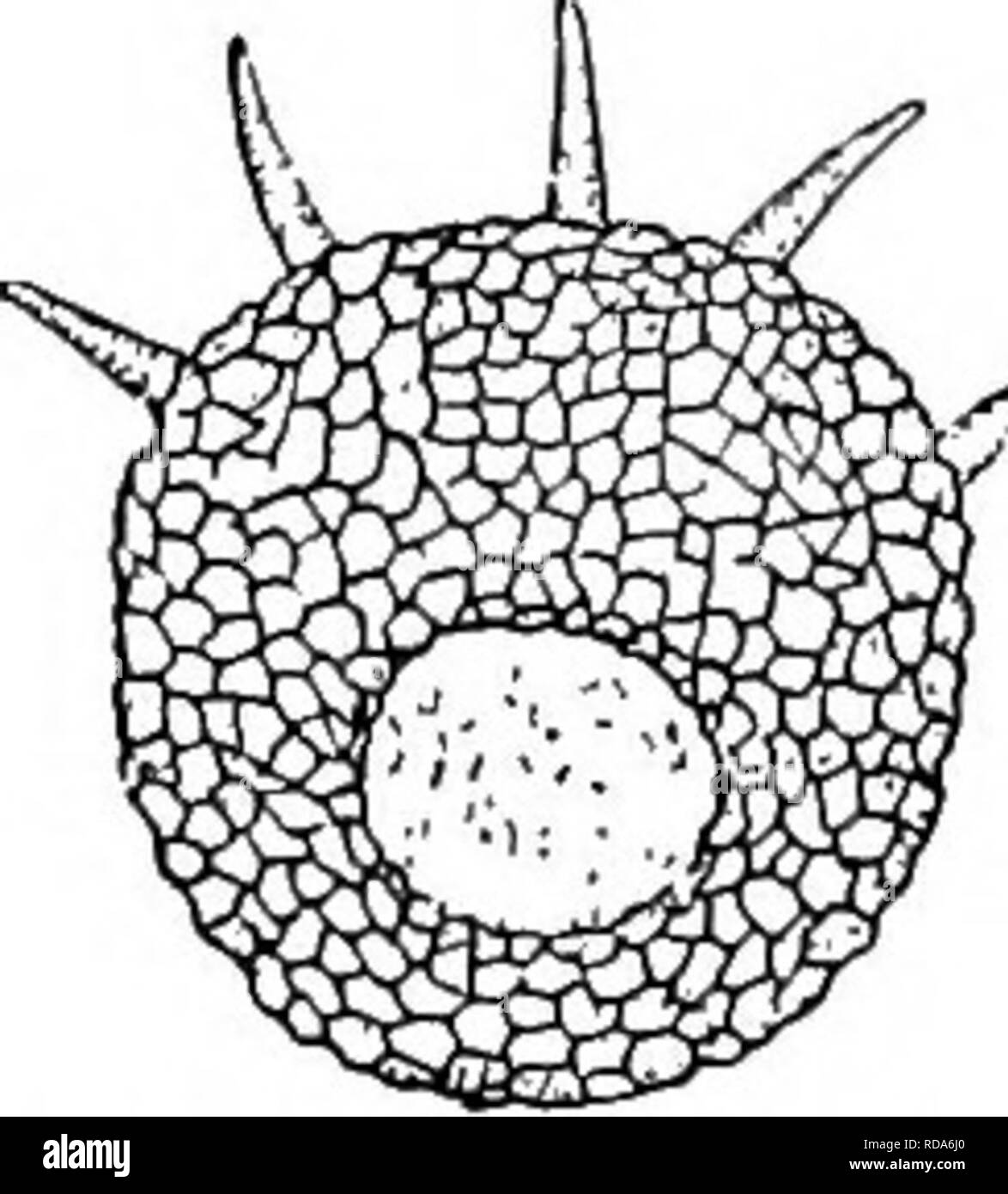. Fresh-water biology. Freshwater biology. 41 (40) . Arcella vulgaris Ehrenberg 1830. Shell may be smooth or with regular undu- lations. Protoplasm united to the inside of the shell by deUcate threads. Pseudopodia long, straight and very transparent. Contractile vacuoles numerous. Nuclei two, opposite in position. This species shows great variation in size and iorm. Very common in pond water. Diameter 80 to 140 m. Fig. 289. Arcella vutnarii. Lateral and inferior views of tlie same individual. X i so. (After Leidy.) Shell very flat. . Arcella discoides Ehrenberg 1843. Shell smooth, regularly pu

Image details
Contributor:
The Book Worm / Alamy Stock PhotoImage ID:
RDA6J0File size:
7.2 MB (248.5 KB Compressed download)Releases:
Model - no | Property - noDo I need a release?Dimensions:
1503 x 1663 px | 25.5 x 28.2 cm | 10 x 11.1 inches | 150dpiMore information:
This image is a public domain image, which means either that copyright has expired in the image or the copyright holder has waived their copyright. Alamy charges you a fee for access to the high resolution copy of the image.
This image could have imperfections as it’s either historical or reportage.
. Fresh-water biology. Freshwater biology. 41 (40) . Arcella vulgaris Ehrenberg 1830. Shell may be smooth or with regular undu- lations. Protoplasm united to the inside of the shell by deUcate threads. Pseudopodia long, straight and very transparent. Contractile vacuoles numerous. Nuclei two, opposite in position. This species shows great variation in size and iorm. Very common in pond water. Diameter 80 to 140 m. Fig. 289. Arcella vutnarii. Lateral and inferior views of tlie same individual. X i so. (After Leidy.) Shell very flat. . Arcella discoides Ehrenberg 1843. Shell smooth, regularly punctate, with a large circular aperture. It is a shy species, the pseudopodia seldom being observed. Contractile vacuoles numerous. Nuclei two. Common in pond water. Diameter from 72 to 264 II. Fig. 290. Arcella discoides. X ITS. (After Penard.) 42 (39) Shell periphery with projecting points. Arcella dentata Ehrenberg 1830. When viewed laterally the shell has the appearance of a crown, the teeth-Uke points being produced from the base of the low dome. Nuclei two; contractile vacuoles numerous. Habitat bogs and swamps. A rare species. Diameter 132 to 1841^. Fig. 291. Arcella dentata. Lateral and inferior views of the same indi- vidual. X 100. (Af^er Leidy.) 43 (38) Shell with punctae sometimes indistinct. Aperture very wide. Pyxidicula Ehrenberg. Representative species. Pyxidicula cymhalum Penard 1902. Shell patelliform, brown in color, with distinct punctae. Aper- ture round, nearly as wide as the diameter of the shell, bordered by a narrow rim. Contractile vacuole single. Nuclei probably two. Pseudopodia not observed in this species. Identified by Penard in material from Summit Lake, Colorado. The only spe- cies of the genus thus far reported from North America. Diameter 8s to 90 11.. Habitat mosses. Shell without regular markings, but with foreign particles attached. Aperture eccentric. . Centropyxis Stein. Representative species. Centropyxis aculeata Stein 1857. Shell compres